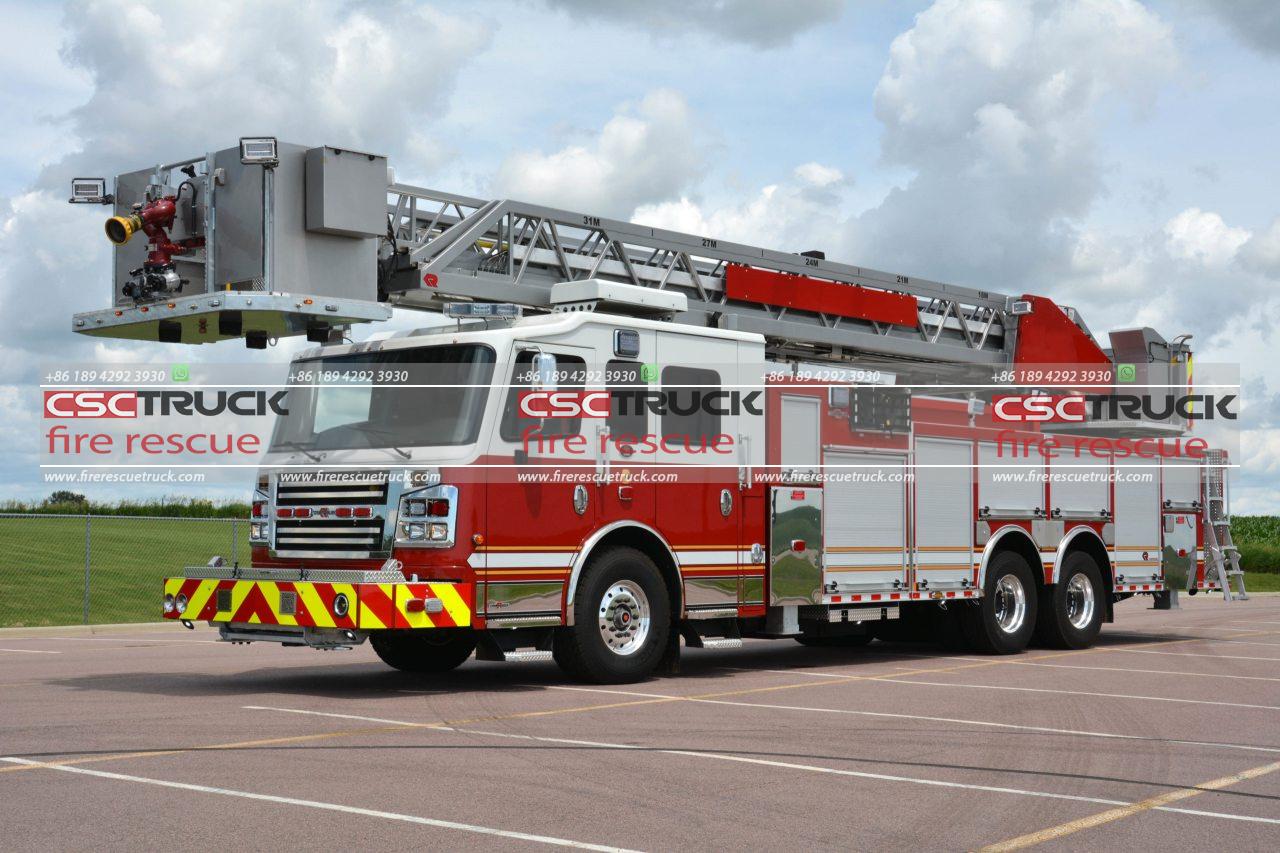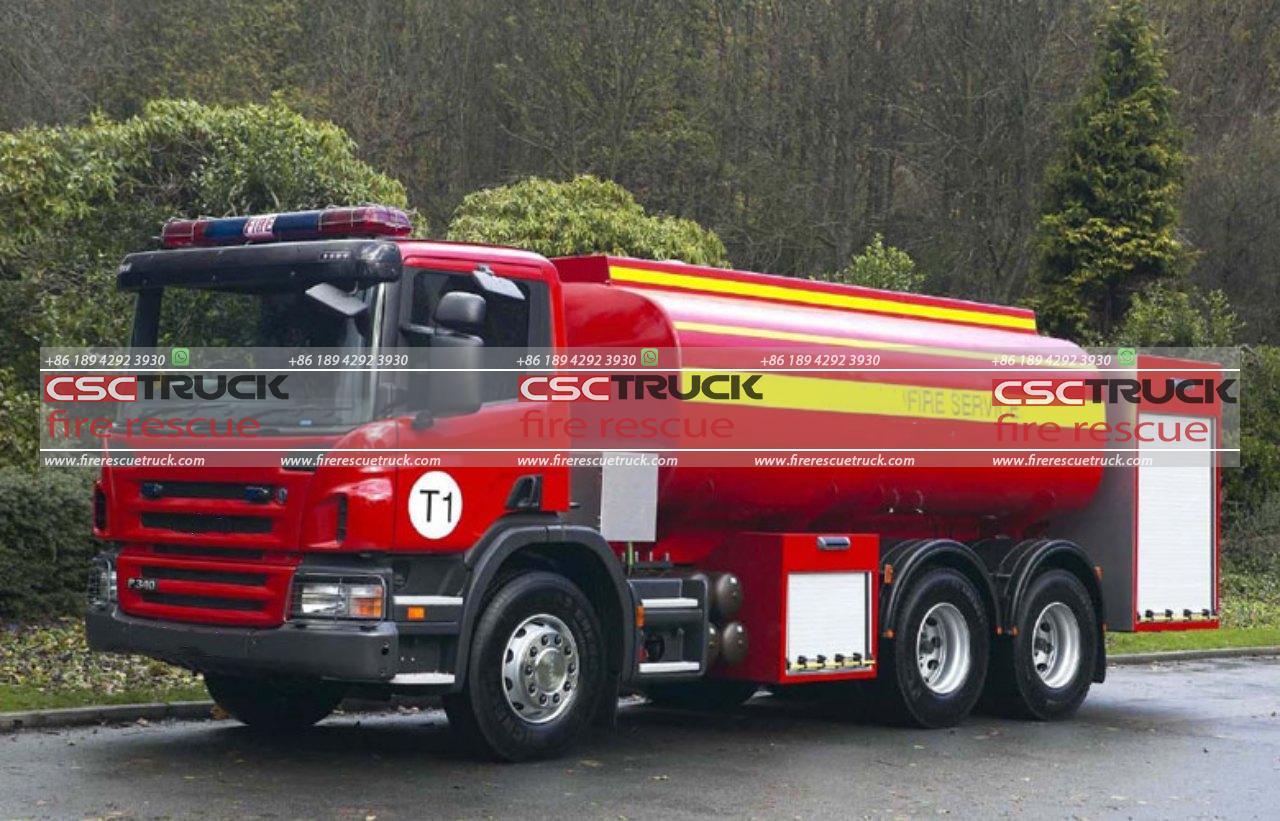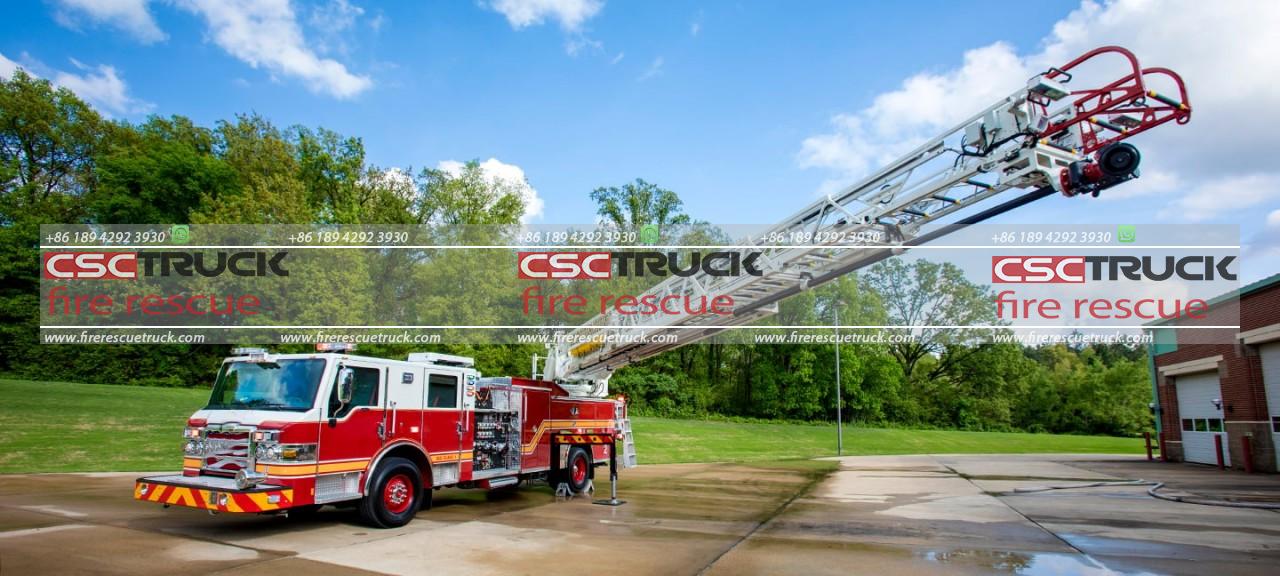When you think of a fire truck, one of the first images that likely comes to mind is the massive vehicle rushing through streets, sirens blaring, and fire hoses spraying water to put out a blaze. Fire trucks are iconic in their appearance, designed with a variety of critical tools to combat fires effectively. One of the most important features of a fire truck is its water tank, which is crucial for supplying the water needed during firefighting operations. But where exactly is the water tank on a fire truck? And how does it function with other components on the truck? This article will delve into the location, design, and role of the water tank on a fire truck.
Understanding the Basic Layout of a Fire Truck
Fire trucks come in various shapes and sizes, depending on the type of vehicle and its intended use. However, the general design typically includes several key components:
- Chassis: The main body of the truck, which houses the engine, transmission, and other mechanical systems.
- Pump: The pump is responsible for pushing water from the tank or external water sources through the hoses and nozzles.
- Water Tank: The tank holds the water that firefighters will use during an emergency. It’s essential to make sure the truck can operate independently of external water sources for short periods.
- Hoses and Nozzles: These are the tools used to direct the flow of water from the tank to the fire.
- Ladders, Rescue Tools, and Equipment Storage: Fire trucks also carry ladders, medical equipment, extrication tools, and other devices necessary for rescue operations.
The water tank, although not always visible from the outside, is integral to the firefighting process. It stores the water needed to suppress fires when immediate access to a hydrant or other water source is not available.
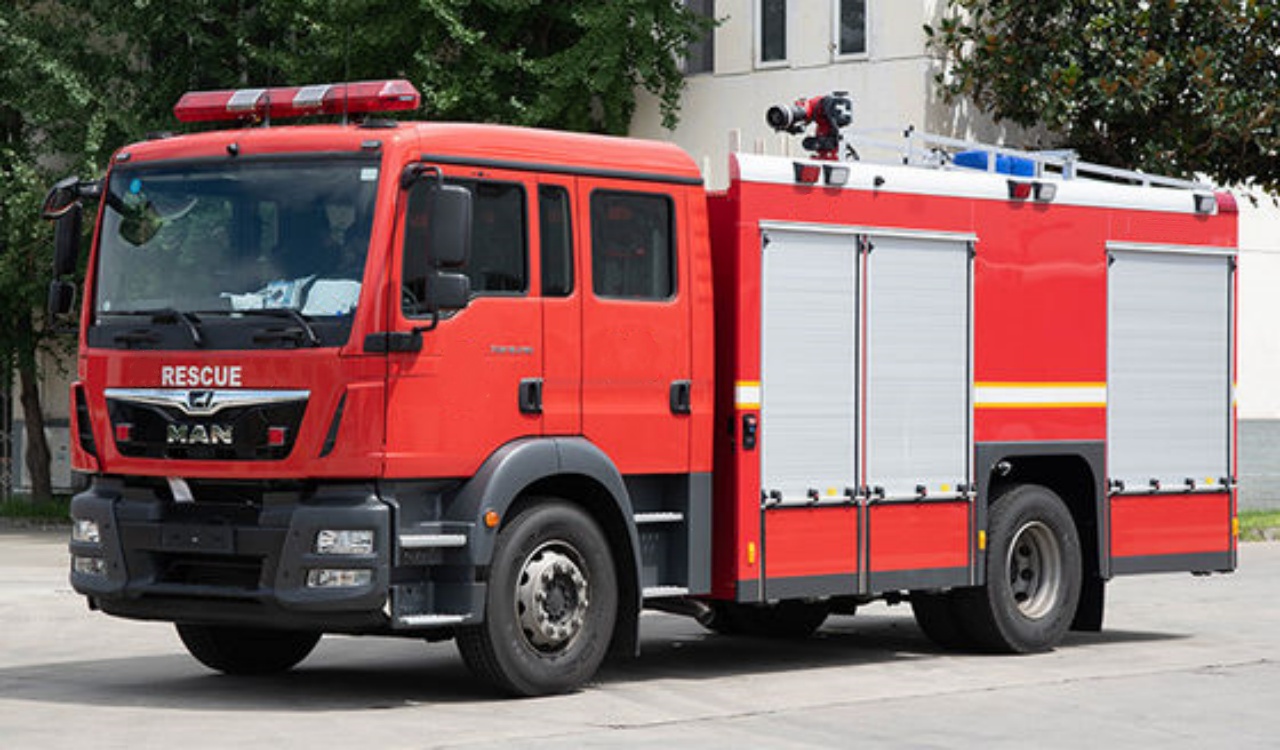
Where is the Water Tank Located?
The location of the water tank on a fire truck can vary depending on the truck’s design, but in most cases, it is positioned in one of two places:
- Under the Rear Compartment (Rear-Mounted Tank): In many fire trucks, particularly those with a more traditional, boxy design, the water tank is located beneath the rear section of the truck. This location helps to balance the weight distribution, ensuring that the fire truck remains stable when in motion. The tank is often mounted directly to the frame of the truck and is positioned between the axles or slightly toward the rear. This placement is efficient for maintaining the vehicle’s maneuverability while maximizing space for other firefighting equipment and personnel.
- Between the Chassis and the Pump Panel (Midship Tank): In some fire trucks, especially modern models, the water tank is located more centrally, between the truck’s chassis and the pump panel. This placement allows for better weight distribution and can make it easier for the crew to access the pump controls and hoses. It also provides more room in the rear compartment for additional storage or specialized equipment.
- On the Top or Sides (Specialized or Custom Trucks): In rare cases, such as specialized fire trucks for unique environments or missions, the water tank might be mounted in less conventional positions, such as on top of the truck or the sides. These designs are typically chosen for specific purposes, such as creating extra room in the vehicle or allowing for higher water capacity.
The Water Tank’s Capacity
The size of a fire truck’s water tank depends on the truck’s role and the size of the vehicle. In general, a typical fire truck’s water tank can hold anywhere between 300 and 1,500 gallons of water. Smaller, more agile fire trucks like those used in wildland firefighting or city service may have smaller tanks, often ranging from 300 to 500 gallons. Larger trucks, such as those used in urban firefighting or for industrial emergencies, may carry up to 1,500 gallons or more.
The size of the tank is determined by the vehicle’s intended use. A truck used for structure fires in an urban environment, where access to hydrants is common, may carry a smaller tank, relying more on external water sources. On the other hand, a truck used in rural areas with fewer hydrants may carry a larger tank to ensure that it can function independently for a longer period.
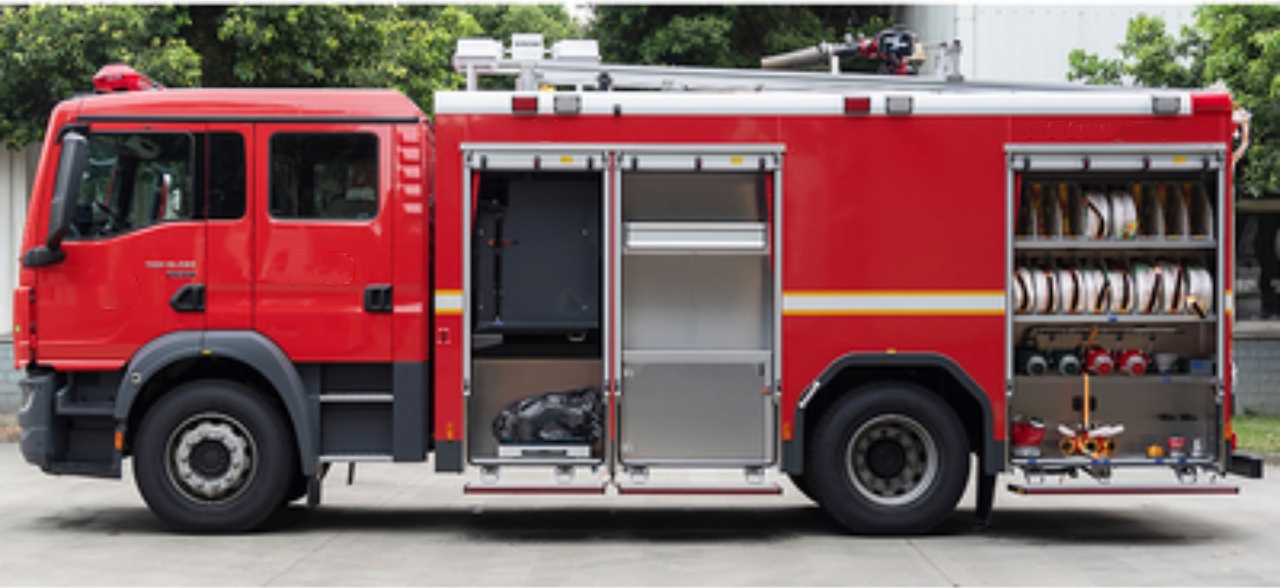
How the Water Tank Works
The water tank is connected to the fire truck’s pump system. The pump is the heart of the water distribution system. Here’s a breakdown of how it works:
- Filling the Tank: The water tank is typically filled from fire hydrants or other external water sources, such as water tenders or other fire trucks. The process involves using high-pressure hoses to fill the tank quickly before the truck is dispatched to an emergency.
- Activating the Pump: Once at the fire scene, the pump is engaged. The pump draws water from the tank and forces it through the hoses. The water is then directed toward the fire through various nozzles that can adjust the flow and spray patterns depending on the situation.
- Distributing Water: The truck’s pump panel, usually located on the side or rear of the fire truck, has various valves that control the water flow. These valves allow firefighters to direct the flow of water to the needed hose lines, and to adjust the pressure, ensuring that the right amount of water is applied to the fire.
- Water Conservation: Firefighters are trained to use the water efficiently to prevent running out of tank supply too quickly. In situations where the water supply from the tank is insufficient, firefighters can quickly switch to an external source of water, such as a hydrant or a relay from another truck.
Maintenance of the Water Tank
Maintaining the water tank is crucial to the overall functioning of the fire truck. The tank needs to be regularly checked for leaks, rust, or any signs of wear and tear. The water stored in the tank is also monitored for quality, as stagnant water can develop algae or debris, which could clog the pump system. Fire departments often establish schedules for cleaning and inspecting their water tanks to ensure that they are ready for service at all times.
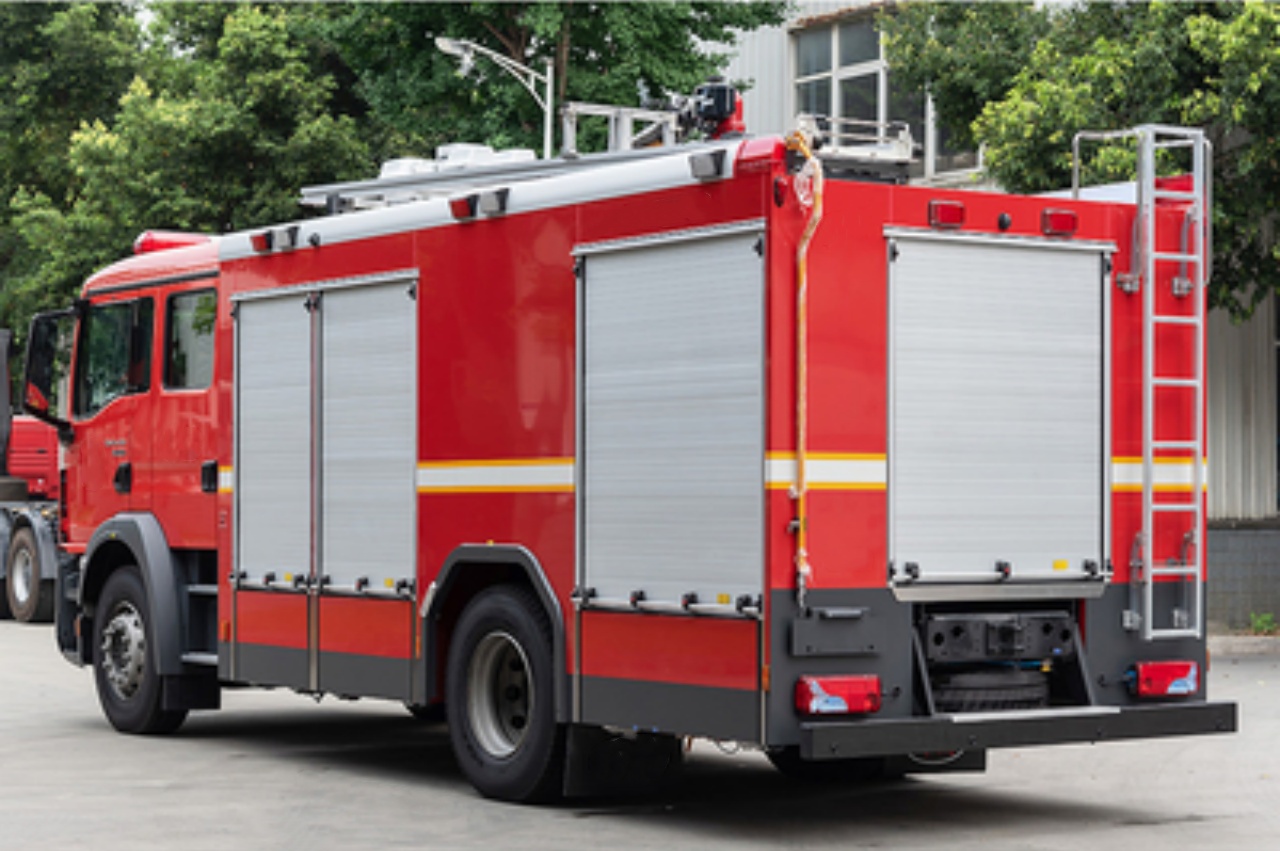
Conclusion
The water tank on a fire truck is a vital component that plays an essential role in firefighting operations. Its location, capacity, and design vary depending on the type of fire truck, but it is always strategically placed to ensure that the vehicle can function efficiently during an emergency. Whether mounted at the rear, midship, or in other locations, the water tank is part of a complex system that allows firefighters to combat fires effectively, even when immediate access to hydrants or other water sources is not available. The careful design, regular maintenance, and smart utilization of this critical component make fire trucks one of the most important tools in saving lives and property in the event of a fire.


